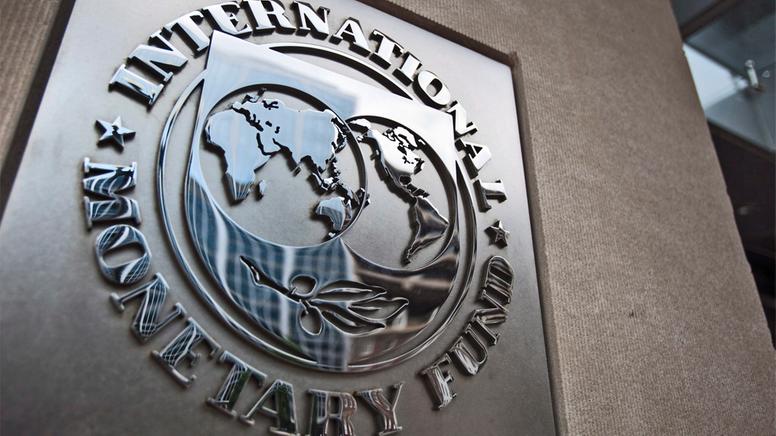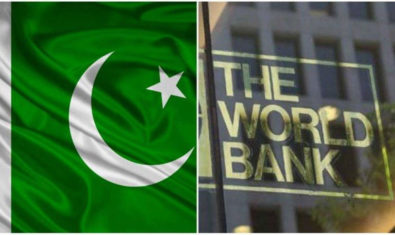International Monetary Fund (IMF) said that macroeconomic risks have begun to re-emerge in Pakistan since the end of the Extended Fund Facility (EFF) program. It also said that long-standing challenges remain, as the pace of fiscal consolidation has slowed, public debt remains high, and mobilization of tax revenue needs to be further strengthened.
The IMF report, released on Thursday, also states that external vulnerabilities have increased with a widening current account deficit and rising medium-term external repayment obligations linked to the China Pakistan Economic Corridor (CPEC) and other large investment projects.
The report states that macroeconomic resilience was strengthened during the three-year EFF-supported program completed in September 2016, growth increased, fiscal deficit was reduced, and foreign currency reserves recovered. Structural reforms were also set in motion; long-standing fiscal and energy sector constraints started to be tackled, and social safety nets were strengthened.
Challenges to Economic Growth
Policy implementation has weakened and macroeconomic vulnerabilities have begun to re-emerge, fiscal consolidation slowed, the current account deficit widened, and foreign exchange reserves declined. On the structural front, the accumulation of arrears in the power sector has resumed, financial losses of ailing public sector enterprises continue to weigh on scarce fiscal resources and exports remain low.
Foreign exchange reserves have declined since the end of the EFF-supported program and remain below comfortable levels. On the structural front, progress in electricity sector reforms has been mixed, with a renewed build-up in circular debt; and financial losses of ailing public sector enterprises (PSEs) have continued.
Private investment and exports remain low to support higher private-sector led growth and catalyze needed job creation. Unemployment is at 5.9 percent (10½ percent among youth and 9½ percent among women) and the informal economy is large.
Despite significant progress over the past two decades, poverty remains high at about 30 percent in 2013 (9 percent based on the 2001 poverty line), inequality slightly declined but remains sizable, and priority social spending, although having increased significantly, needs to be further enhanced.
Account Deficit and Exchange Rate
The report further states that international reserves have declined amid a rising current account deficit and a broadly unchanged dollar/rupee exchange rate. During the first three quarters of fiscal year 2016-17, the current account deficit widened to 2 percent of GDP, reflecting increasing imports (14 percent, y-o-y) due to investments related to CPEC, recovering oil prices, and sluggish remittances (-2 percent y-o-y), driven by slower growth in the Gulf Cooperation Council (GCC) countries. After declining for two consecutive years, exports further dropped by 1 percent (y-o-y).
The exchange rate continued to remain stable against the U.S. dollar, supported by the SBP’s foreign exchange interventions, and further appreciated in real effective terms 6 percent during this fiscal year (18 percent cumulatively over the past three years). International reserves declined to $16.1 billion at end-April 2017 (3.4 months of imports) from US$18.1 billion in June 2016 (four months of imports). In addition, the SBP’s derivative position reached $3.6 billion in net obligations (from $2 billion in June 2016), which could put additional pressure on reserves.
Economic Recovery
The Fund maintained that the economic recovery is expected to continue and to strengthen over the medium term. Buoyant activity in construction and services along with recovering agriculture are driving real GDP growth, which is estimated at 5.3 percent in fiscal year 2016-17. Strong machinery imports and fast growing iron and steel and auto sectors point to strengthening domestic demand.
Growth is benefiting from rising investment related to CPEC, strengthening private sector credit growth, and reduced fiscal drag, and there are increasing signs of a recovery in exports. However, moderating (though still strong) growth in domestic cement dispatches and sluggish remittances are signs of caution.
Headline inflation will likely be contained at 4.3 percent on average in fiscal year 2016-17. Over the medium term, growth is expected to increase to about 6 percent on the back of CPEC and other energy sector investments, and helped by growth supporting structural reforms.
Foreign Direct Investment and Debt Repayment Obligations
The Fund maintained that external financing needs are expected to pick up amid a widening current account deficit. Rising imports, stagnant remittances, and weakly recovering exports are weighing on the current account deficit, which is expected to widen to 3 percent of GDP in fiscal year 2016-17.
FDI inflows and significant government external borrowing expected in the fourth quarter would allow financing the increase in the current account deficit and foreign reserves to recover to $18.5 billion (3.8 months of imports; 73 percent of the IMF’s reserve adequacy (ARA) metric), albeit with risks to the downside.
Pakistan will face increasing government and CPEC-related external repayment obligations, and external financing needs are projected to increase to nearly 7½percent of GDP over the medium term, highlighting the need for macroeconomic and structural policies supporting competitiveness.
External risks to the outlook are, in staff’s view, skewed to the downside. Lower growth in advanced countries and in emerging markets (notably China and GCC) along with greater uncertainty around world trade could weaken exports, FDI, and remittances, with the latter being particularly vulnerable to slower-than-expected growth in the GCC countries, where nearly two thirds of remittances to Pakistan originate.
Oil & Remittances
A more pronounced recovery of oil prices or stronger than-expected growth in non-oil imports could add to balance of payments pressures. Tightening global financial conditions could adversely impact capital inflows, and continued appreciation of the real effective exchange rate would further erode export competitiveness and discourage remittances.
Lower-than-expected export growth or remittances over the medium term could increase risks associated with rising repayment obligations and profit repatriation from energy investment and other CPEC-related projects. On the upside, a renewed decline in oil prices would ease balance of payments pressures and support growth.
Pakistan’s growth outlook is favorable, with real GDP growth estimated at 5.3 percent this fiscal year and strengthening to 6 percent over the medium-term on the back of stepped-up China Pakistan Economic Corridor (CPEC) investments, better energy availability, and growth-supporting structural reforms.
Key external risks include lower trading partner growth, tighter international financial conditions, a faster rise in global oil prices and, over the medium term, failure to generate sufficient exports to meet rising external obligations from foreign-financed investments.

























